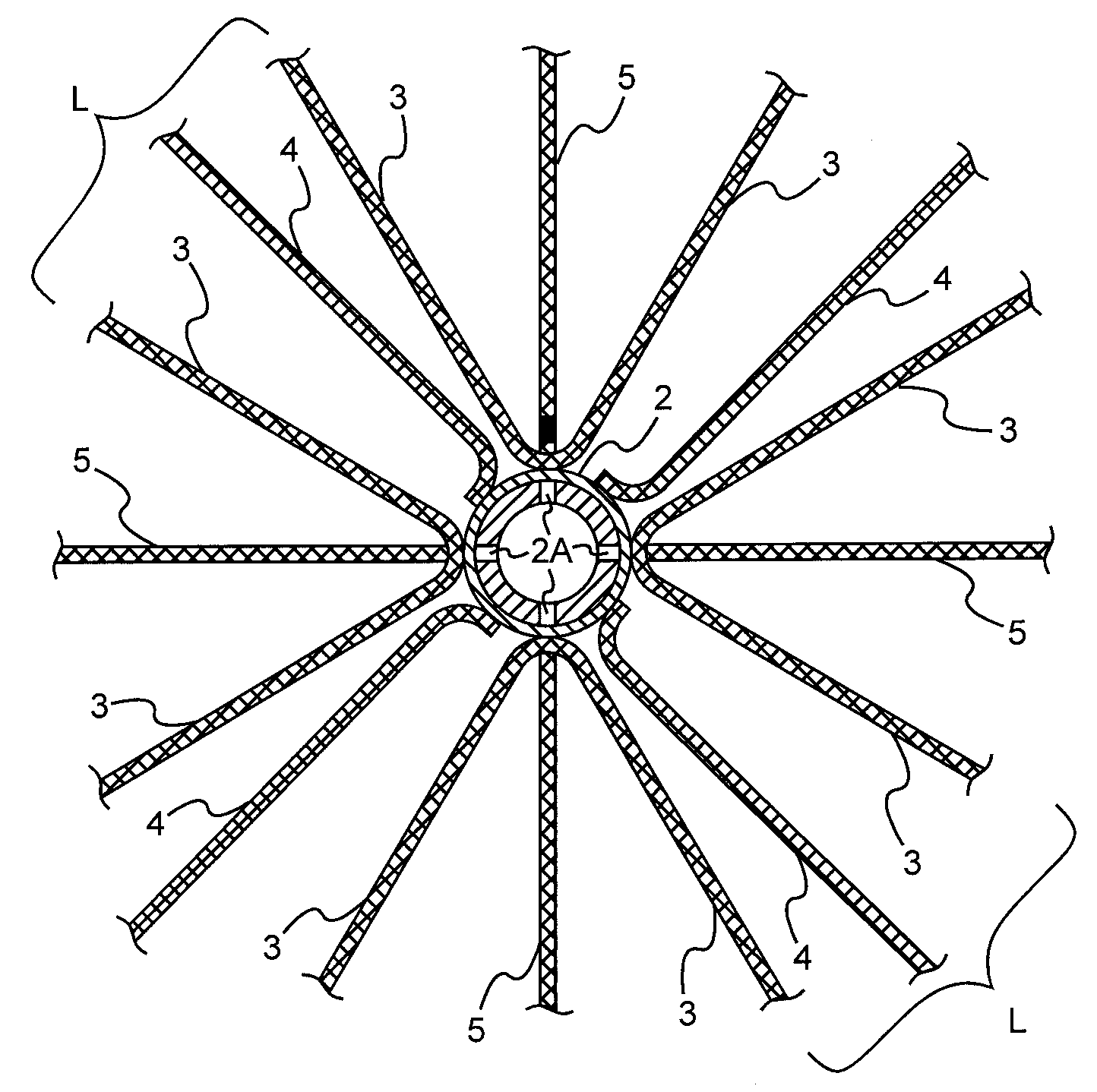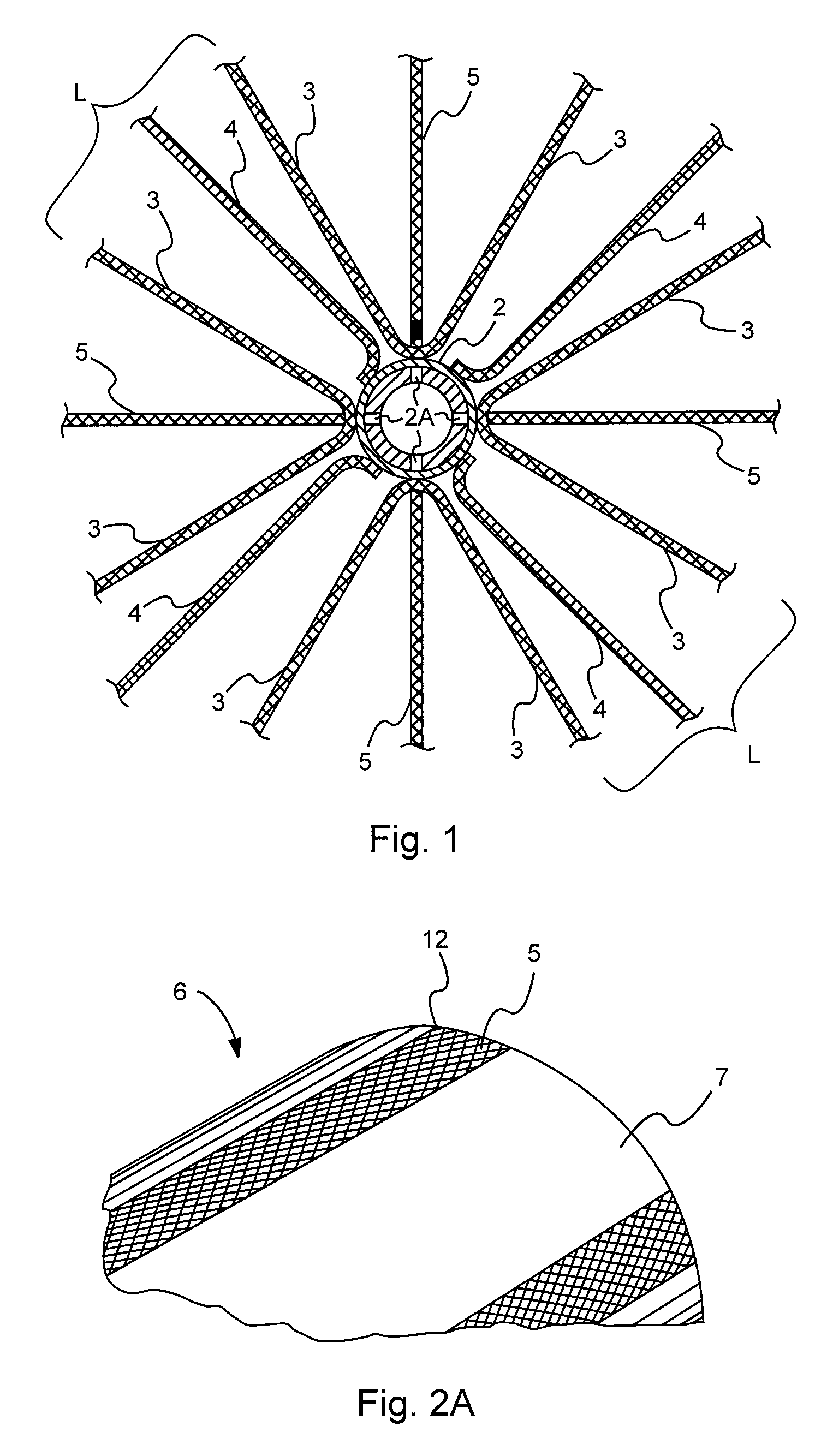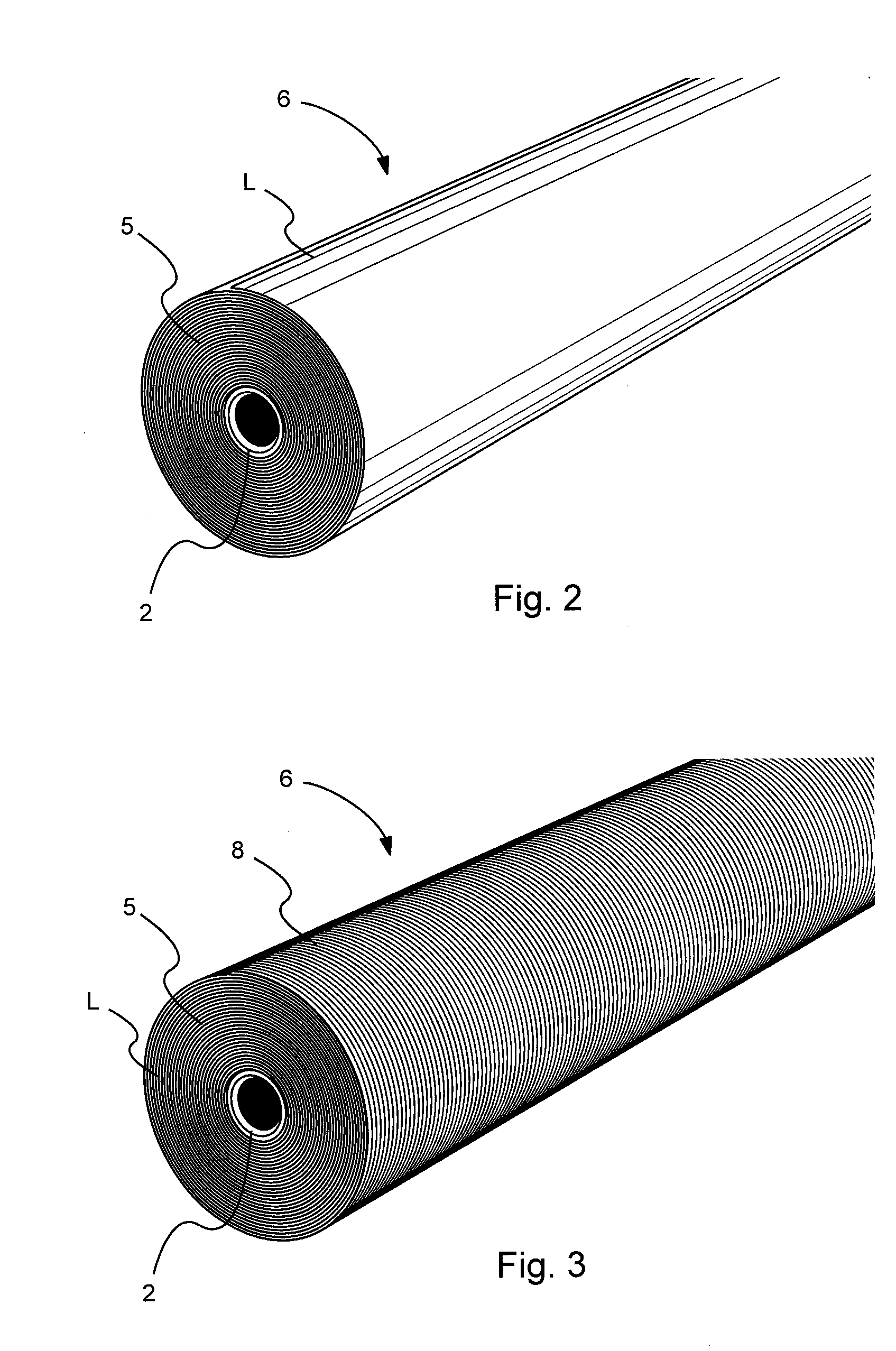Sanitary spiral wound filtration cartridge
- Summary
- Abstract
- Description
- Claims
- Application Information
AI Technical Summary
Benefits of technology
Problems solved by technology
Method used
Image
Examples
example 1
[0056]A 6.3 in (160 mm) diameter by 40 in (1 m) long element was rolled using 12 folded leaves of TriSep UE10 polyethersulfone ultrafiltration membrane, 12 leaves of Delstar 0.031 in (0.79 mm) thick with 9 strands per inch (3.5 strands per cm) style 14592 feed spacer, and 12 leaves of 0.012 in (0.30 mm) thick epoxy-coated tricot permeate carrier sheeting. Winding is carried out around a polysulfone permeate tube with an OD of about 1.68 in (42.7 mm), and a two part polyurethane adhesive is used for the side and end seals. The wound element was secured using adhesive tape. After allowing the urethane adhesive to cure for 12 hours, the element was placed onto a tensioning machine as depicted in FIG. 6. The end seals were trimmed, and then the end of a roll of overwrap sheet material was attached using a thermal sealer. The overwrap material is a polypropylene netting material with a thickness of 0.031 in (0.79 mm). The element was tensioned to 5.6 lbf / in (1,000N / m) while winding seven...
example 2
[0057]Two 7.9 in (201 mm) diameter by 40 in (1 m) long elements were rolled using 18 folded leaves of TriSep ACM2 polyamide reverse osmosis membrane, 18 leaves of Delstar 0.031 in (0.79 mm) thick with 9 strands per inch (3.5 strands per cm) style 14592 feed spacer, and 18 leaves of 0.012 in (0.30 mm) thick epoxy-coated tricot permeate carrier. A polysulfone permeate tube with an OD of about 1.68 in (42.7 mm) and a two-part polyurethane adhesive were used. The wound elements were secured using adhesive tape.
[0058]After allowing the urethane adhesive to cure for 12 hours, one element was placed onto a tensioning machine as seen in FIG. 6. The end seals were trimmed, and then overwrap sheeting was attached using a thermal sealer as in Example 1. The overwrap material was a woven fabric which was made from polypropylene and had a thickness of 0.031 in (0.79 mm). The element was tensioned to 6.2 lbf / in (1,100N / m), while winding five complete wraps of overwrap sheet around the outside of ...
example 3
[0061]Two 7.9 in (201 mm) diameter by 40 in (1 m) long elements were rolled using 18 folded leaves of TriSep ACM2 polyamide reverse osmosis membrane, 18 leaves of Delstar 0.031 in (0.79 mm) thick, with 9 strands per inch (3.5 strands per cm) style 14592 feed spacer, and 18 leaves of 0.012 in (0.30 mm) thick epoxy-coated tricot permeate material. A polysulfone permeate tube of OD about 1.68 in (42.7 mm) in and a two-part polyurethane adhesive were used. The wound elements were secured using adhesive tape. After allowing the urethane adhesive to cure for 12 hours, one element was placed onto the tensioning machine of FIG. 6. The end seals were trimmed, and then an overwrap sheeting was attached using a thermal sealer as in Example 1. The overwrap sheeting was a polyproylene netting material with a thickness of 0.031 in (0.78 mm). The element was tensioned to 7.0 lbf / in (1,250N / m) while winding seven complete wraps of overwrap sheet around the outside of the element. The sheeting was t...
PUM
| Property | Measurement | Unit |
|---|---|---|
| Length | aaaaa | aaaaa |
| Length | aaaaa | aaaaa |
| Length | aaaaa | aaaaa |
Abstract
Description
Claims
Application Information
 Login to View More
Login to View More - R&D
- Intellectual Property
- Life Sciences
- Materials
- Tech Scout
- Unparalleled Data Quality
- Higher Quality Content
- 60% Fewer Hallucinations
Browse by: Latest US Patents, China's latest patents, Technical Efficacy Thesaurus, Application Domain, Technology Topic, Popular Technical Reports.
© 2025 PatSnap. All rights reserved.Legal|Privacy policy|Modern Slavery Act Transparency Statement|Sitemap|About US| Contact US: help@patsnap.com



